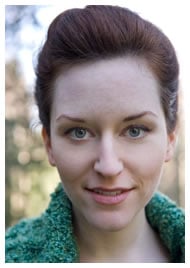Imagine that you are in Russia. You are not fluent in Russian. But it is the morning, and you are hungry. There is an orange vendor selling oranges outside of your hotel and you would like to buy one. The orange vendor speaks no English. How will you communicate? You will create a pidgin language! You will point, you will say the few words of Russian you have picked up since you arrived, you will use English, you will laugh, you will go back and forth with the vendor until both of you agree how many oranges you will be buying and how much it will cost. Pidgin languages happen when people meet who do not share a common language and yet they need to communicate. In situations where these people repeatedly meet, this pidgin language becomes more regularized. Eventually, if the pidgin language becomes widespread with many people using it so that a baby learns it as a native language, it is called a creole.
When we were talking about pidgin languages in our Linguistics class, I had a group of students come up to the front of the room. All of the students spoke different second languages, and they were only able to speak using their second language for the purpose of the exercise. The seven students had to figure out how to share a granola bar without using any English. They had so much fun gesturing, laughing, and trying to get the other students to understand the words they were using that they came up with the idea to experience a pidgin language on a bigger scale. We decided that we would have a "Pidgin Dinner Party" during class on Friday. Everyone would bring a dish to pass and dressing formally was encouraged. We invited teachers who had second hour prep to join us.
For the Dinner Party, students were seated next to people who did not speak the same second language that they did. In our class we had speakers of French, Spanish, German, Mandarin, Japanese, Hmong, and Igbo (I teach in a language immersion school). Students had to figure out how to share a meal with each other without using English.
Looking back, many students said that it was their favorite activity in the class!













